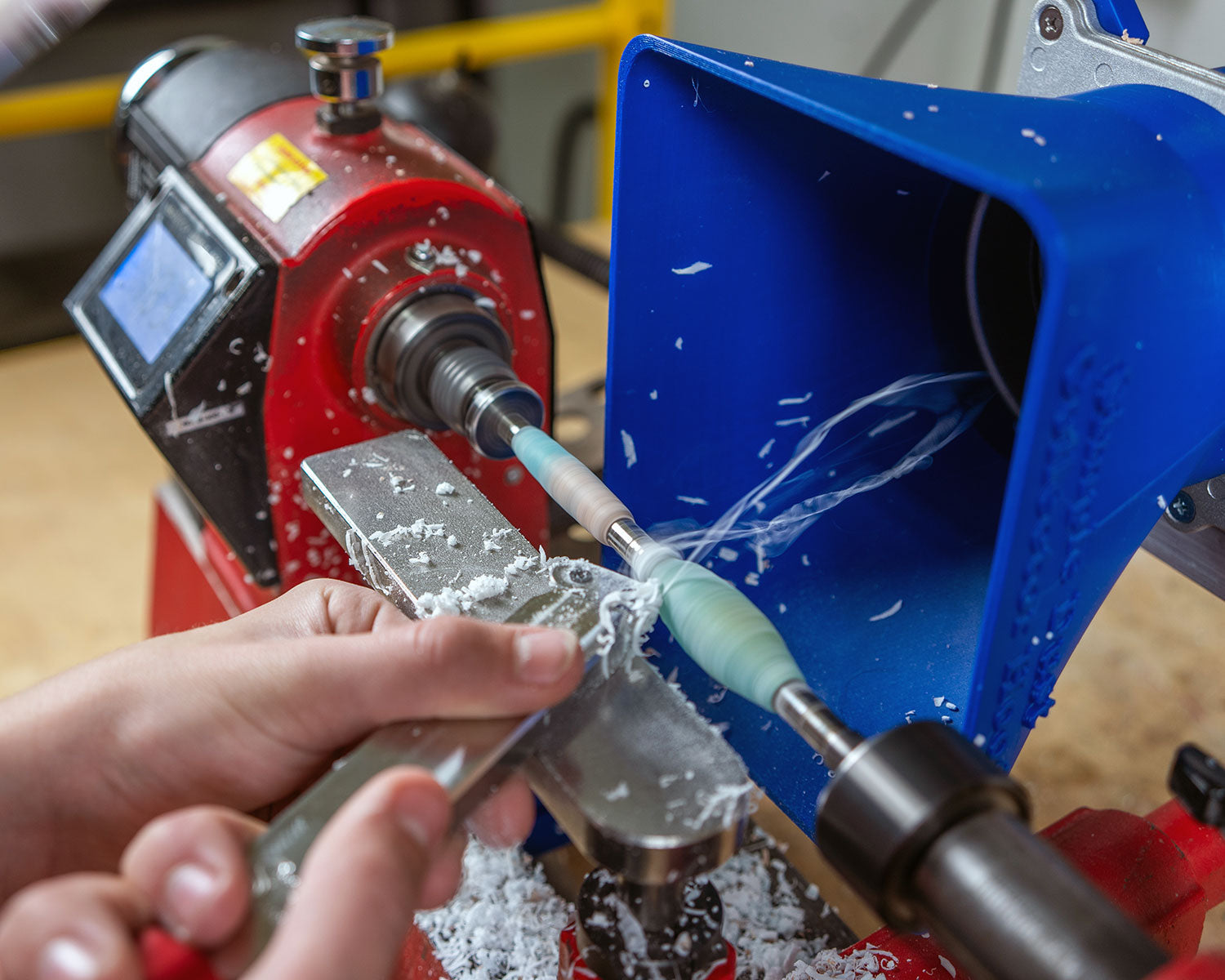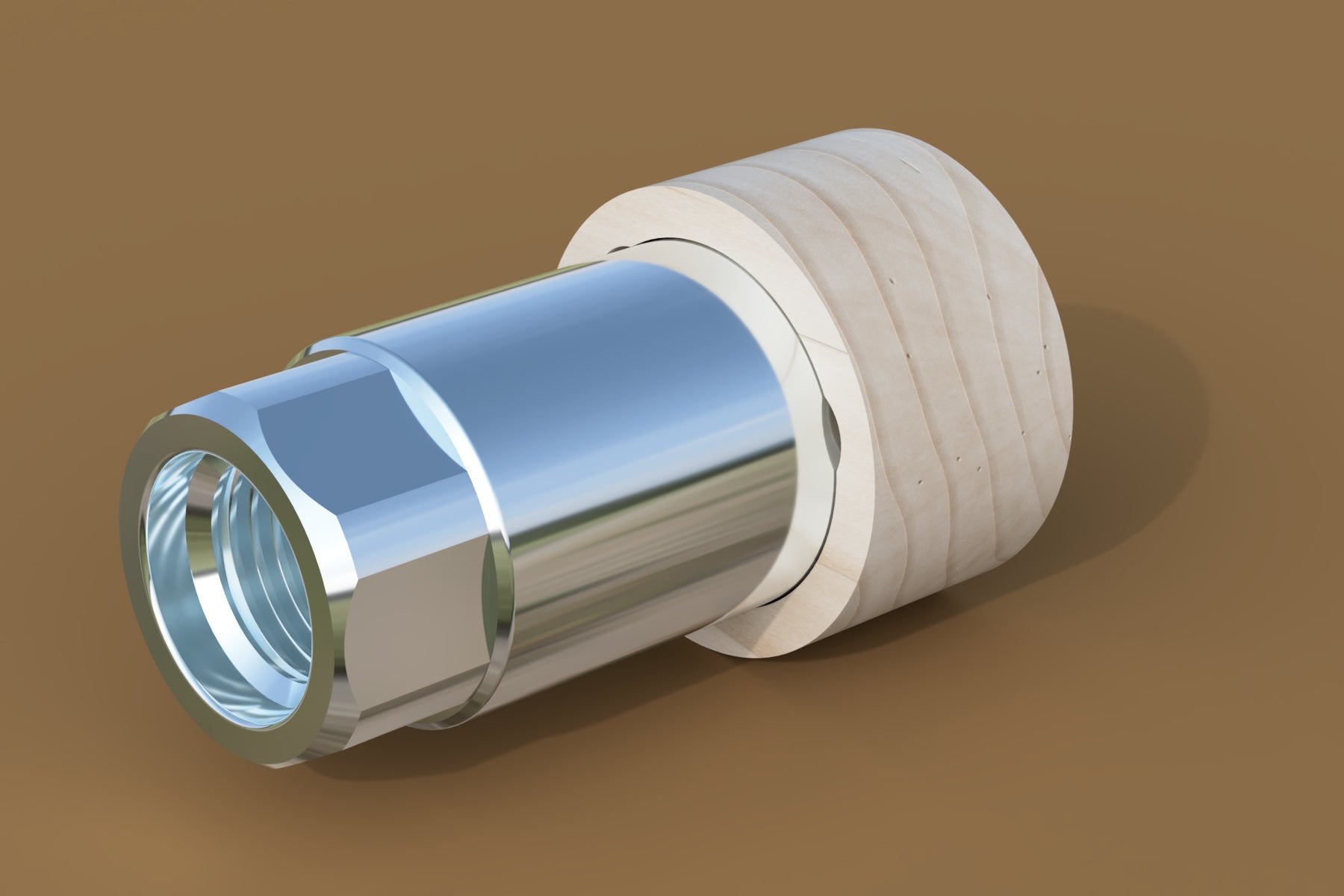Acrylic, Resin and Hybrid projects have changed the woodturning landscape. Traditional carbide tipped tools did not perform well with these new materials, so we set out to make a solution. The birth of our Acrylic/Resin (AR) tool line came as a result of a lot of trials (and errors), turning all types of man-made and hybrid projects. The goal was to create tools that could be used to turn any of the man-made materials we could find, while giving the turner as much creative artistic ability as possible. A one size fits all approach did not produce the desired results across all the different materials available, including hybrid pieces. A nod back to a few early woodturning techniques with the development of carbide tools used like traditional gouges also proved to be a very successful and great approach.
Watch our Tool Demonstrations here: How to use AR Tools
AR STH:
This turning and hollowing tool harkens back to the traditional gouge and features a round shaft with a round flat top carbide cutter. The classic “riding the bevel” technique, the same used as with a traditional gouge, produces great shear cutting action as opposed to a scraping cut that chips man made materials. This technique is the answer to cutting difficult materials as well as wood so it is the perfect tool for hybrid projects. Adjusting the rotation angle controls the aggressiveness of the shear cut. Plus, it has the added benefit of pointing the “ribbons” or shavings away from you so they do not hit you in the face or wrap around the turning, blocking your view of the tool and project. This tool is ideal for beginners as it is simpler to use and less aggressive than the Simple Shear Cutting Finisher.
- Ride/Rub the bevel on the workpiece, then raise the handle until it begins to cut.
- Rotate or roll the tool on the tool rest in the direction you are going to move.
- Cut slightly above the centerline of the lathe.
- 5/8” Round Tool Shaft with ½" Round Flat Top Carbide Cutter (search for AR STH for replacements)
- This tool will work in the Simple Hollowing System.
A few things to keep in mind:
- Turning acrylics takes longer than wood.
- Shearing cuts proved to be very successful, where scraping cuts were not.
- Introduce your cutting edge slowly, try not to “stab” the wood as plastics can shatter with this technique.
- Increase your lathe speed and slow your tool presentation to the blank.
- Work from the ends inward.
Make light cuts to reduce chip outs. Increase your aggressiveness as you get the feel for it.




















